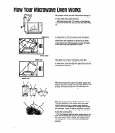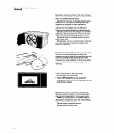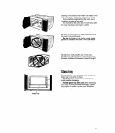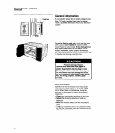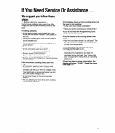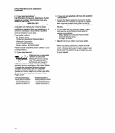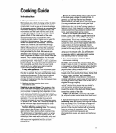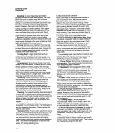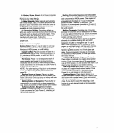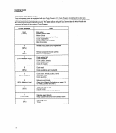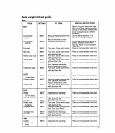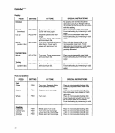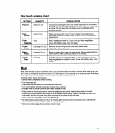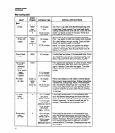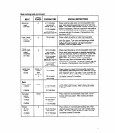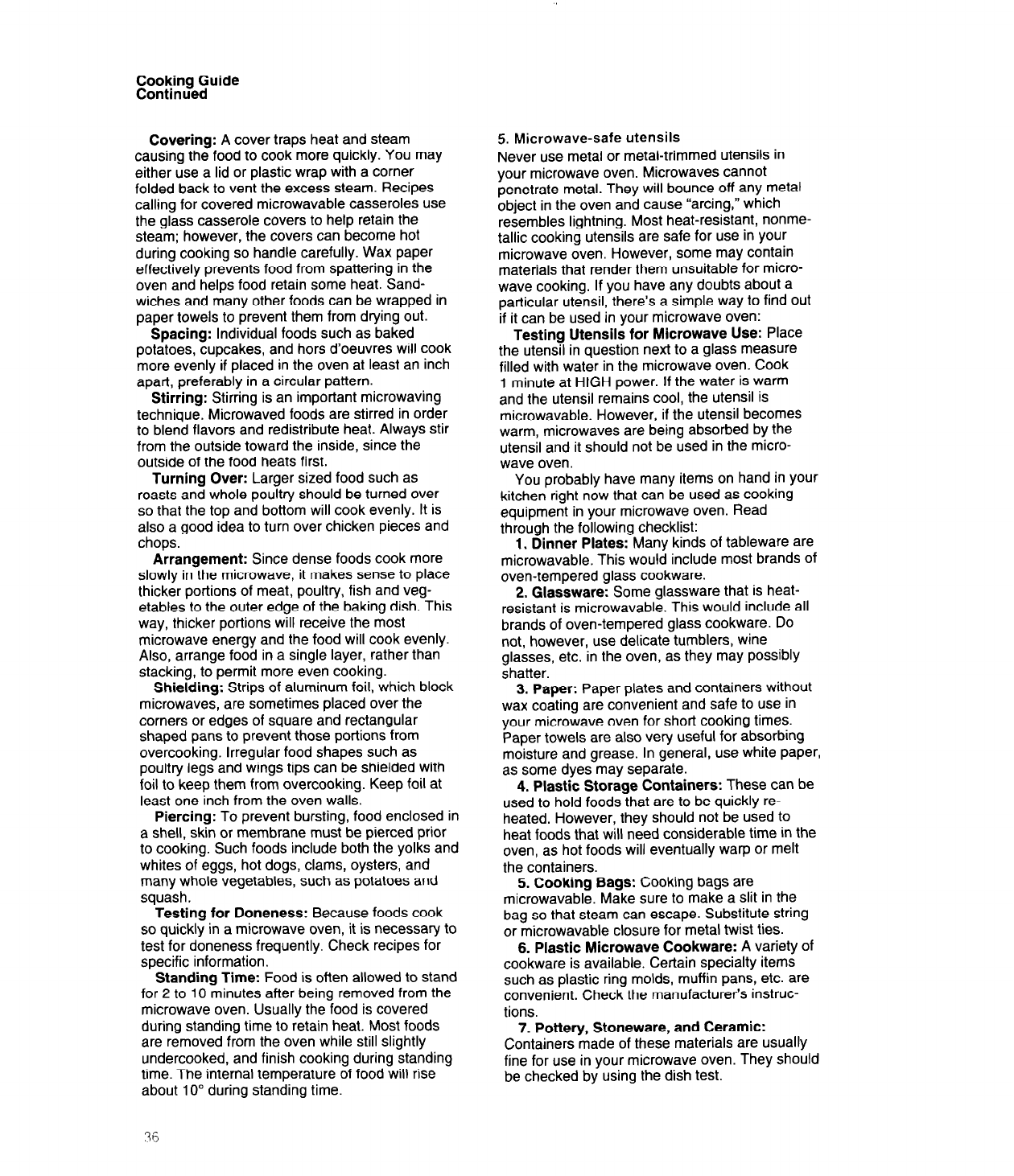
Cooking Guide
Continued
Covering: A cover traps heat and steam
causing the food to cook more quickly. You may
either use a lid or plastic wrap with a corner
folded back to vent the excess steam. Recipes
calling for covered microwavable casseroles use
the glass casserole covers to help retain the
steam; however, the covers can become hot
during cooking so handle carefully. Wax paper
effectively prevents food from spattering in the
oven and helps food retain some heat. Sand-
wiches and many other foods can be wrapped in
paper towels to prevent them from drying out.
Spacing: Individual foods such as baked
potatoes, cupcakes, and hors d’oeuvres will cook
more evenly if placed in the oven at least an inch
apart, preferably in a circular pattern.
Stirring: Stirring is an important microwaving
technique. Microwaved foods are stirred in order
to blend flavors and redistribute heat. Always stir
from the outside toward the inside, since the
outside of the food heats first.
Turning Over: Larger sized food such as
roasts and whole poultry should be turned over
so that the top and bottom will cook evenly. It is
also a good idea to turn over chicken pieces and
chops.
Arrangement: Since dense foods cook more
slowly in the microwave, it makes sense to place
thicker portions of meat, poultry, fish and veg-
etables to the outer edge of the baking dish. This
way, thicker portions will receive the most
microwave energy and the food will cook evenly.
Also, arrange food in a single layer, rather than
stacking, to permit more even cooking.
Shielding: Strips of aluminum foil, which block
microwaves, are sometimes placed over the
corners or edges of square and rectangular
shaped pans to prevent those portions from
overcooking. Irregular food shapes such as
poultry legs and wings tips can be shielded with
foil to keep them from overcooking. Keep foil at
least one inch from the oven walls.
Piercing: To prevent bursting, food enclosed in
a shell, skin or membrane must be pierced prior
to cooking. Such foods include both the yolks and
whites of eggs, hot dogs, clams, oysters, and
many whole vegetables, such as potatoes and
squash.
Testing for Doneness: Because foods cook
so quickly in a microwave oven, it is necessary to
test for doneness frequently. Check recipes for
specific information.
Standing Time: Food is often allowed to stand
for 2 to 10 minutes after being removed from the
microwave oven. Usually the food is covered
during standing time to retain heat. Most foods
are removed from the oven while still slightly
undercooked, and finish cooking during standing
time. The internal temperature of food will rise
about 10” during standing time.
5. Microwave-safe utensils
Never use metal or metal-trimmed utensils in
your microwave oven. Microwaves cannot
penetrate metal. They will bounce off any metal
object in the oven and cause “arcing,” which
resembles lightning. Most heat-resistant, nonme-
tallic cooking utensils are safe for use in your
microwave oven. However, some may contain
materials that render them unsuitable for micro-
wave cooking. If you have any doubts about a
particular utensil, there’s a simple way to find out
if it can be used in your microwave oven:
Testing Utensils for Microwave Use: Place
the utensil in question next to a glass measure
filled with water in the microwave oven. Cook
1 minute at HIGH power. If the water is warm
and the utensil remains cool, the utensil is
microwavable. However, if the utensil becomes
warm, microwaves are being absorbed by the
utensil and it should not be used in the micro-
wave oven.
You probably have many items on hand in your
kitchen right now that can be used as cooking
equipment in your microwave oven. Read
through the following checklist:
1. Dinner Plates: Many kinds of tableware are
microwavable. This would include most brands of
oven-tempered glass cookware.
2. Glassware: Some glassware that is heat-
resistant is microwavable. This would include all
brands of oven-tempered glass cookware. DO
not, however, use delicate tumblers, wine
glasses, etc. in the oven, as they may possibly
shatter.
3. Paper: Paper plates and containers without
wax coating are convenient and safe to use in
your microwave oven for short cooking times.
Paper towels are also very useful for absorbing
moisture and grease. In general, use white paper,
as some dyes may separate.
4. Plastic Storage Containers: These can be
used to hold foods that are to be quickly re-
heated. However, they should not be used to
heat foods that will need considerable time in the
oven, as hot foods will eventually warp or melt
the containers.
5. Cooking Bags: Cooking bags are
microwavable. Make sure to make a slit in the
bag so that steam can escape. Substitute string
or microwavable closure for metal twist ties.
6. Plastic Microwave Cookware: A variety of
cookware is available. Certain specialty items
such as plastic ring molds, muffin pans, etc. are
convenient. Check the manufacturer’s instruc-
tions.
7. Pottery, Stoneware, and Ceramic:
Containers made of these materials are usually
fine for use in your microwave oven. They should
be checked by using the dish test.



